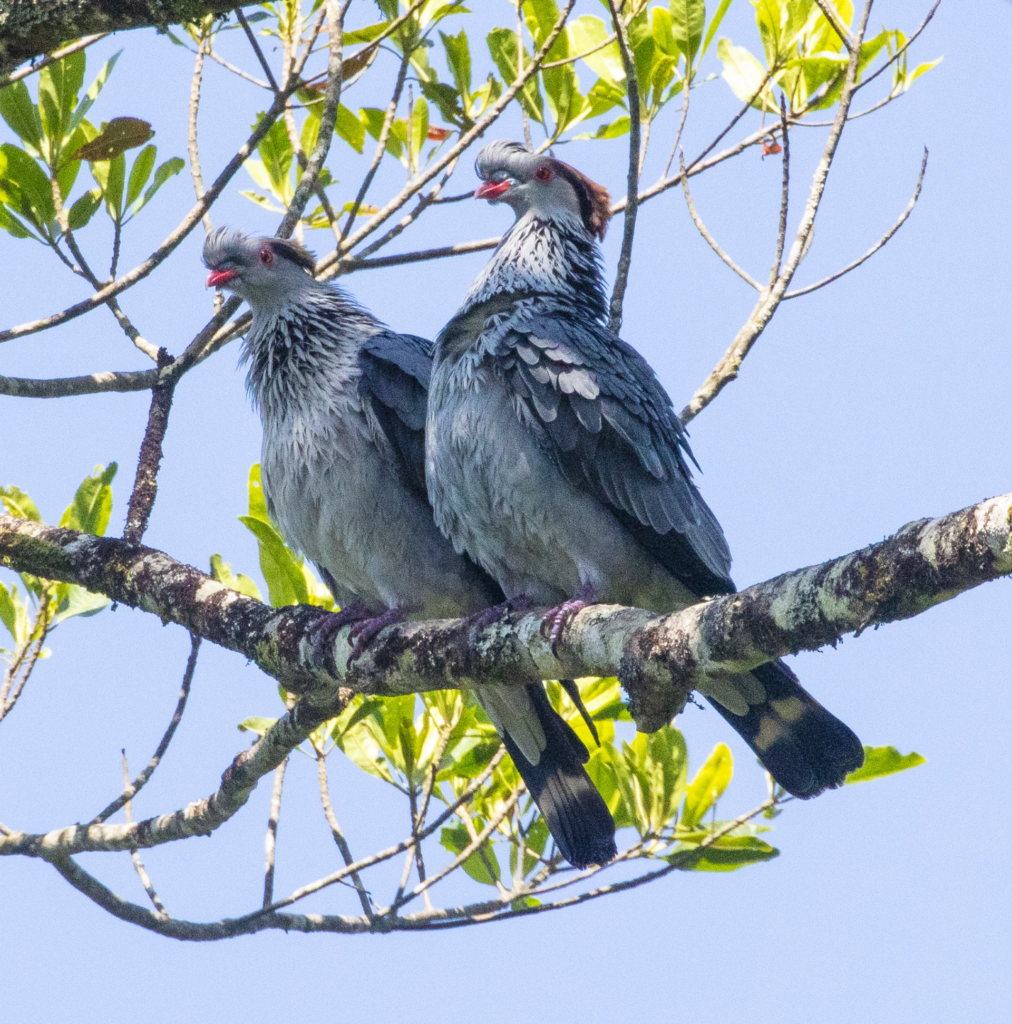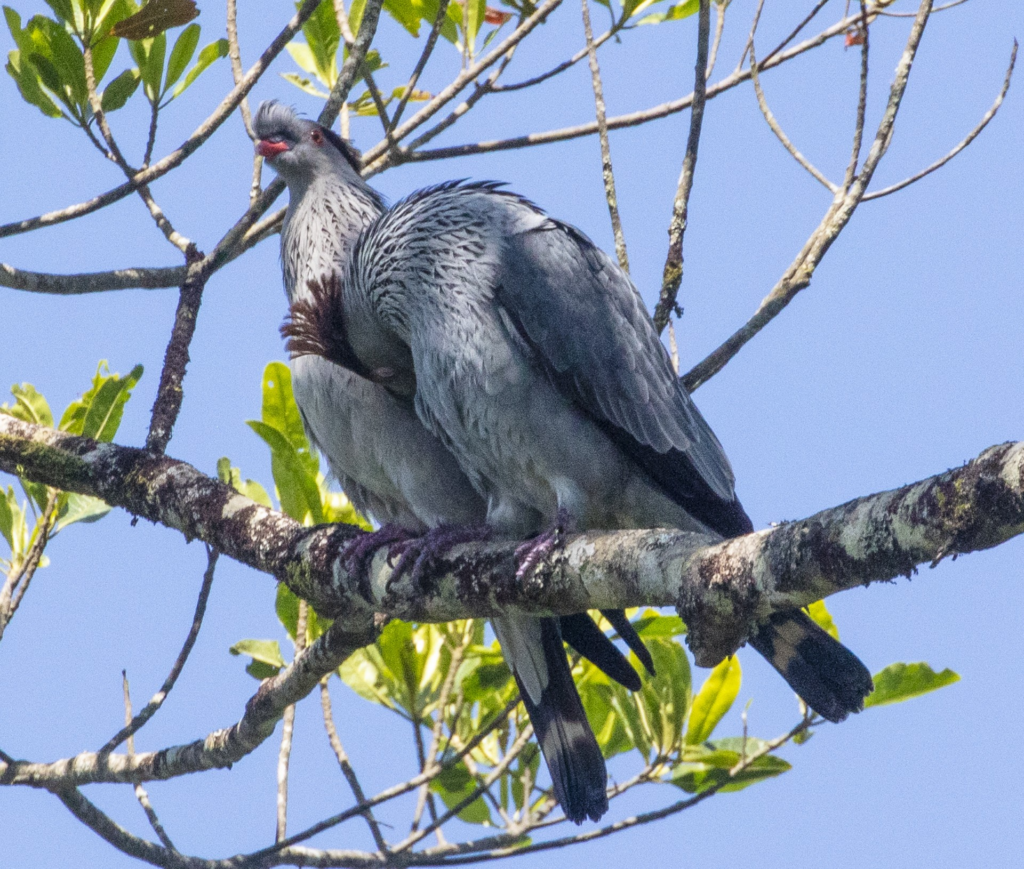Many of the rainforest trees at Paluma are presently providing a bounty of fruit for many species, especially pigeons. As is their lifestyle, large numbers of Topknot Pigeons (Lopholaimus antarcticus) are here taking advantage of that seasonal abundance. They are big pigeons and fly particularly high above the canopy, sometimes singly, or in pairs or flocks.
Finding them parked up somewhere easy to photograph is a rare treat and I managed to grab two shots of one sitting high in a flowering Buckinghamia behind our deck. Despite the 500mm lens the bird occupied only a small part of the frame but when cropped I was delighted to see it carrying a twig in its beak. Clearly it was going about nest building.

Yesterday a female was sitting high in a quandong behind our back yard when it was joined by a male who pressed close and then began to bob its head deeply to its chest and bounced upright again. This went for a while until they both flew off together.


If courtship and nesting are successful they’ll produce just one nestling after about three weeks which will be fully fledged around a month later. Both parents incubate the eggs and feed the young, using regurgitated “pigeon milk” from their crops in the earliest stages. It takes both parents to keep up the supply of pigeon milk, explaining why only one egg is laid.
Text and Photos by Peter Cooke
